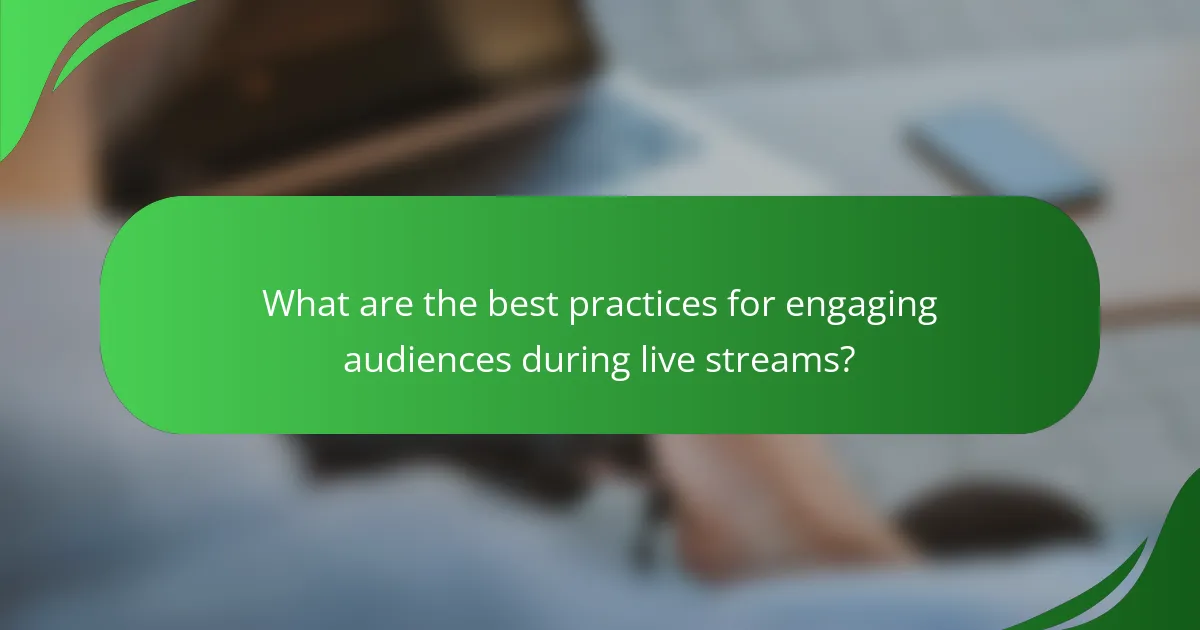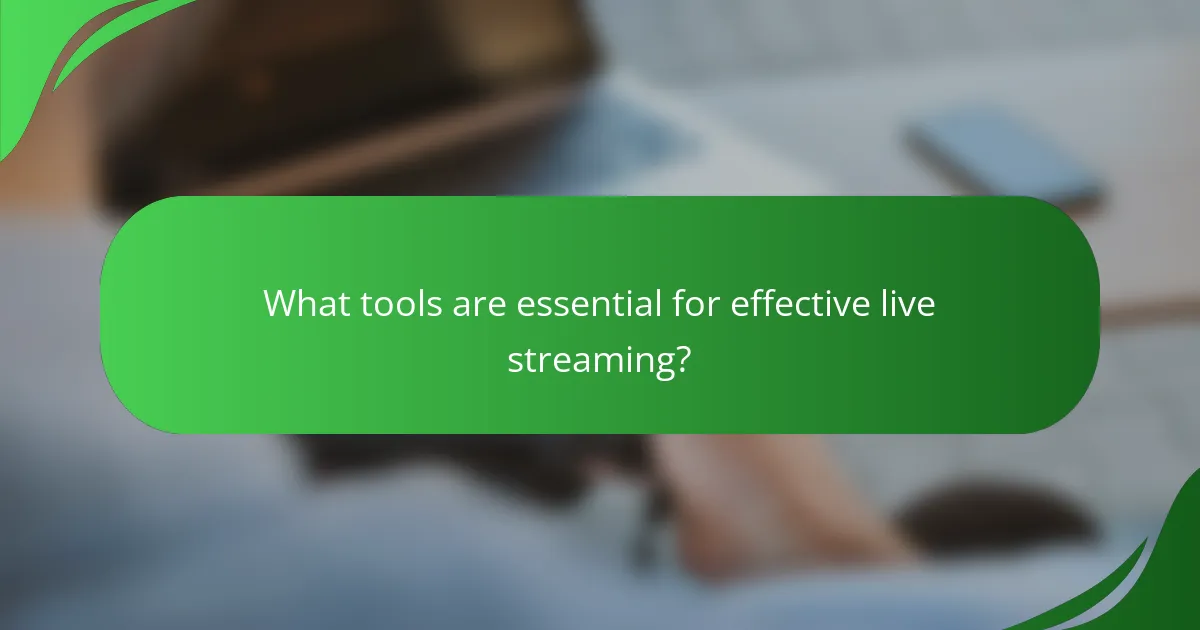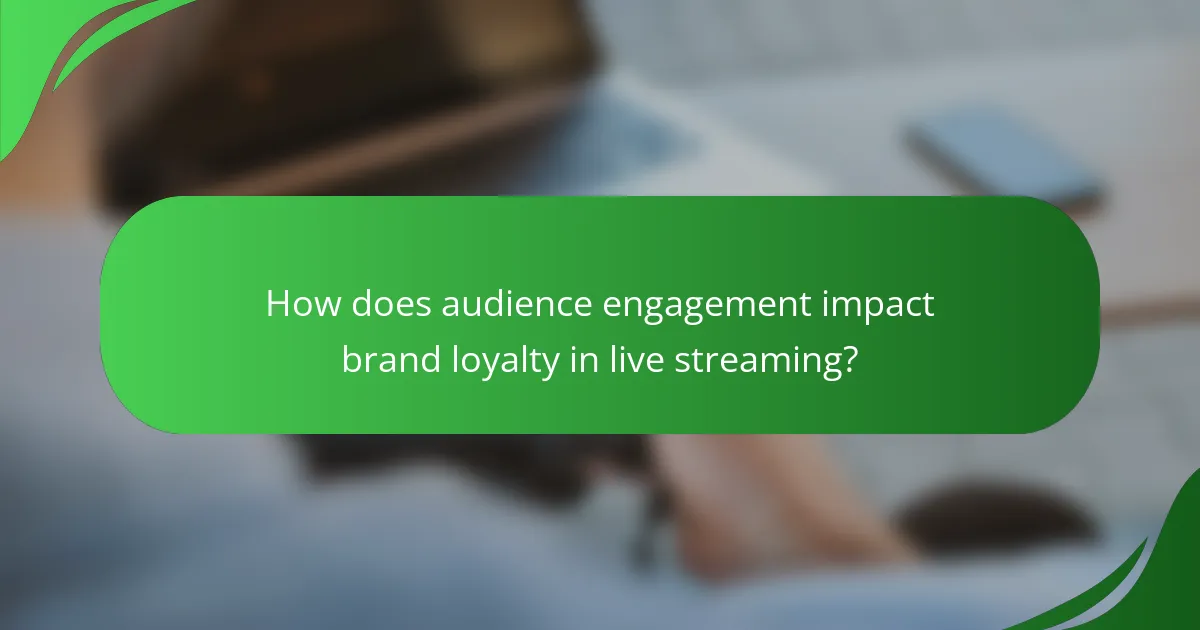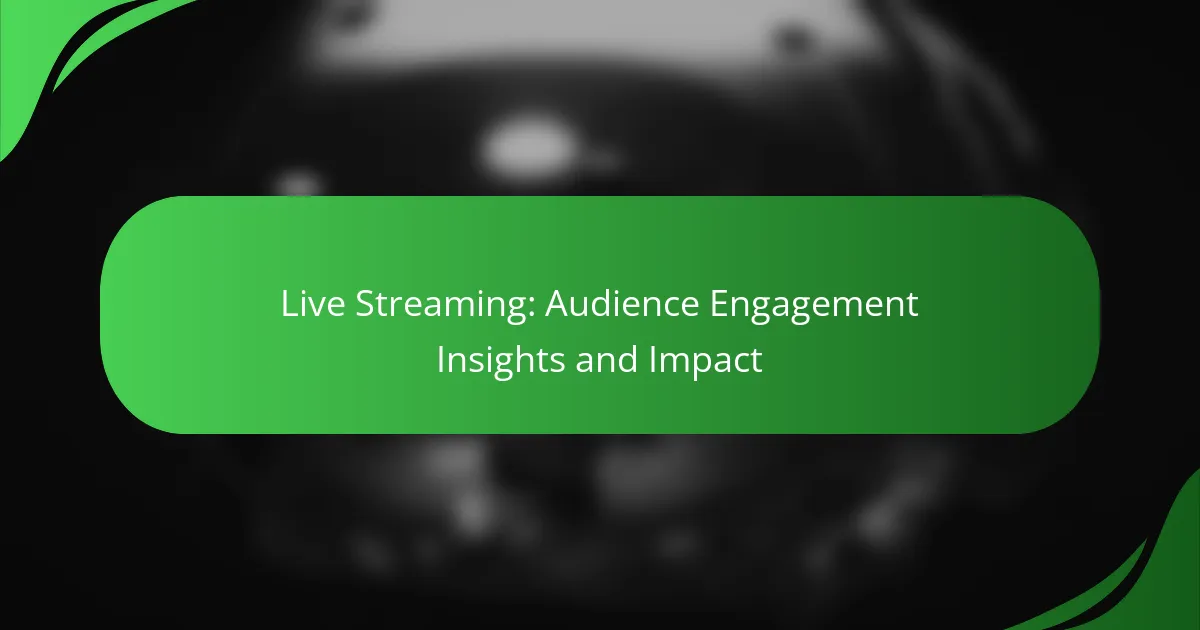Live streaming has emerged as a transformative medium for audience engagement, particularly in the UK, by facilitating real-time interaction and fostering community connections. This dynamic approach not only enhances viewer experience but also significantly improves retention rates, making it an invaluable asset for brands and content creators alike.

How does live streaming enhance audience engagement in the UK?
Live streaming significantly boosts audience engagement in the UK by allowing real-time interaction and fostering a sense of community. This immediate connection enhances viewer experience and retention, making it a powerful tool for brands and content creators.
Real-time interaction
Real-time interaction is a key feature of live streaming that allows viewers to engage directly with hosts through comments, questions, and polls. This immediacy creates a dynamic atmosphere where audiences feel valued and heard, leading to increased participation. For example, during a live Q&A session, viewers can ask questions that the host answers on the spot, enhancing the overall experience.
To maximize real-time interaction, consider using platforms that support live chats and interactive features. Encourage viewers to participate by asking open-ended questions and responding promptly to their comments.
Increased viewer retention
Live streaming can lead to higher viewer retention rates compared to pre-recorded content. The excitement of live events often keeps viewers engaged for longer periods, as they do not want to miss out on unfolding moments. Many live streams can retain audiences for over an hour, especially when they include engaging content like interviews or performances.
To improve viewer retention, create a compelling agenda for your live stream and promote it in advance. Use countdowns and reminders to build anticipation, and consider offering exclusive content or incentives for viewers who stay until the end.
Community building
Live streaming fosters community building by creating a shared experience among viewers. When audiences participate in live events together, they develop a sense of belonging and connection, which can lead to loyal followings. For instance, gaming streams often cultivate vibrant communities where fans interact not only during the stream but also in related forums and social media groups.
To build a community around your live streams, engage with your audience outside of streaming hours. Create dedicated social media groups or forums where viewers can discuss content and share experiences. This ongoing interaction strengthens relationships and encourages viewers to return for future streams.

What are the best practices for engaging audiences during live streams?
To effectively engage audiences during live streams, it is essential to incorporate interactive elements, maintain a conversational tone, and provide valuable content. These practices help create a dynamic experience that keeps viewers interested and encourages participation.
Utilizing polls and Q&A sessions
Polls and Q&A sessions are powerful tools for audience engagement during live streams. They allow viewers to express their opinions and ask questions in real-time, fostering a sense of community and involvement. Consider using platforms that support live polling features to easily gather feedback and insights.
When implementing polls, keep questions concise and relevant to the topic at hand. Aim for a mix of light-hearted and serious questions to maintain interest. For Q&A sessions, allocate specific time slots to address audience inquiries, ensuring that viewers feel heard and valued.
Incorporating social media integration
Integrating social media into live streams can significantly enhance audience engagement. Encourage viewers to share their thoughts and experiences on platforms like Twitter or Instagram using a dedicated hashtag. This not only broadens your reach but also creates a sense of community among participants.
Consider displaying a live feed of social media interactions during the stream. This visual element can motivate viewers to engage more actively, as they see their contributions highlighted. Additionally, responding to social media comments in real-time can foster a more interactive atmosphere.
Offering exclusive content
Offering exclusive content during live streams can incentivize viewers to tune in and stay engaged. This could include behind-the-scenes access, special guest appearances, or early previews of upcoming products. Highlighting these unique offerings can create a sense of urgency and excitement among your audience.
To maximize the impact of exclusive content, promote it ahead of time through your marketing channels. Clearly communicate what viewers can expect and how it differs from regular content. This strategy not only boosts attendance but also enhances the perceived value of your live streams.

What tools are essential for effective live streaming?
Effective live streaming requires reliable tools that enhance video quality and audience interaction. Key tools include software for broadcasting, platforms for hosting, and equipment for capturing high-quality audio and video.
OBS Studio
OBS Studio is a free, open-source software that allows users to capture and stream live video. It offers a range of features, including customizable transitions, scene composition, and support for multiple sources, making it ideal for both beginners and advanced users.
To get started with OBS, download the software, configure your settings for video resolution and bitrate, and set up scenes with your desired sources. Keep in mind that a stable internet connection is crucial for maintaining stream quality.
StreamYard
StreamYard is a web-based streaming platform that simplifies the process of going live. It allows users to broadcast directly from their browser without the need for complex setups or downloads, making it accessible for those with limited technical skills.
With StreamYard, you can easily invite guests, share your screen, and customize your stream with branding elements. It supports streaming to multiple platforms simultaneously, which can significantly increase your audience reach.
Zoom
Zoom is primarily known for video conferencing, but it also offers live streaming capabilities. It allows users to host webinars and live events with interactive features such as polls and Q&A sessions, enhancing audience engagement.
To utilize Zoom for live streaming, set up a webinar account, schedule your event, and enable the live streaming option in the settings. This tool is particularly useful for educational or corporate environments where interaction is key.

How can brands measure audience engagement in live streaming?
Brands can measure audience engagement in live streaming through various methods that provide insights into viewer behavior and preferences. Key approaches include utilizing analytics tools, gathering viewer feedback through surveys, and analyzing specific engagement metrics.
Analytics tools
Analytics tools are essential for tracking real-time data during live streams. These platforms can offer insights into viewer counts, watch time, and drop-off rates, helping brands understand audience retention and interest levels. Popular tools include Google Analytics, Facebook Insights, and specialized streaming analytics services.
When selecting an analytics tool, consider factors such as ease of integration, the depth of data provided, and the ability to customize reports. Brands should regularly review analytics to adapt their content strategy based on viewer engagement trends.
Viewer feedback surveys
Viewer feedback surveys are a direct way to gather insights from the audience about their experiences and preferences during live streams. Brands can deploy surveys immediately after a stream or within a follow-up email to capture fresh impressions. Questions can range from content satisfaction to suggestions for future topics.
To maximize response rates, keep surveys concise and offer incentives, such as discounts or exclusive content. Analyzing this feedback can help brands tailor future live streams to better meet audience expectations.
Engagement metrics
Engagement metrics provide quantitative measures of how actively viewers interact with live content. Key metrics include chat activity, likes, shares, and comments, which indicate how engaged the audience is during the stream. Brands should track these metrics to gauge the effectiveness of their content and identify areas for improvement.
It’s important to benchmark these metrics against industry standards or previous streams to assess performance. Brands should focus on increasing engagement by encouraging viewer interaction through polls, Q&A sessions, and live chats, which can enhance the overall experience.

What are the challenges of live streaming for audience engagement?
Live streaming presents several challenges that can hinder effective audience engagement, including technical issues, content moderation, and time zone differences. Addressing these challenges is crucial for maintaining viewer interest and ensuring a smooth streaming experience.
Technical issues
Technical issues such as poor internet connectivity, latency, and software glitches can significantly disrupt live streaming. Viewers expect a seamless experience, and any disruptions can lead to frustration and disengagement.
To mitigate these problems, ensure a stable internet connection with sufficient bandwidth, typically at least 5 Mbps for standard quality. Regularly test your streaming setup before going live to identify and resolve potential issues.
Content moderation
Content moderation is essential during live streams to maintain a positive environment and comply with community guidelines. Unmoderated chats can quickly devolve into spam or abusive behavior, alienating viewers.
Implementing real-time moderation tools or having dedicated moderators can help manage viewer interactions effectively. Establish clear guidelines for acceptable behavior and communicate these to your audience at the start of the stream.
Time zone differences
Time zone differences can pose a challenge for global audiences, as viewers may not be able to tune in at the scheduled time. This can limit engagement and participation, especially for events that rely on live interaction.
To accommodate a wider audience, consider scheduling streams at times that are convenient for multiple time zones or offering on-demand access to recorded content afterward. Promoting your stream in advance across various time zones can also help increase viewership.

How does audience engagement impact brand loyalty in live streaming?
Audience engagement significantly enhances brand loyalty in live streaming by fostering a sense of community and connection. When viewers actively participate, they are more likely to develop a positive association with the brand, leading to increased loyalty and repeat interactions.
Building trust
Trust is essential for brand loyalty, and live streaming provides a platform for brands to showcase authenticity. By engaging directly with the audience through Q&A sessions or real-time feedback, brands can demonstrate transparency and reliability. This interaction helps viewers feel valued and understood, which strengthens their trust in the brand.
For instance, brands that openly address customer concerns during a live stream can turn potential negative experiences into positive ones, reinforcing trust and loyalty.
Creating brand advocates
Engaged audiences are more likely to become brand advocates, promoting the brand to their networks. When viewers feel a personal connection through interactive live streams, they are inclined to share their positive experiences on social media or through word-of-mouth. This organic promotion can significantly expand a brand’s reach.
Encouraging viewers to share their experiences or participate in referral programs during live streams can further amplify advocacy. Simple incentives, like exclusive content or discounts, can motivate viewers to spread the word.
Enhancing customer experience
Live streaming enhances customer experience by providing immediate interaction and personalized content. Viewers appreciate the opportunity to ask questions and receive instant responses, making them feel more connected to the brand. This real-time engagement can lead to a more satisfying experience compared to traditional marketing methods.
To maximize this benefit, brands should focus on creating engaging content that addresses viewer interests and encourages participation. Regularly scheduled live events can keep audiences coming back, ensuring a consistent and enjoyable experience.



